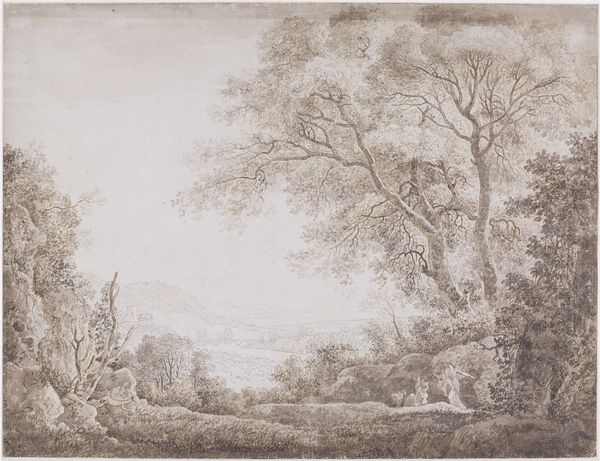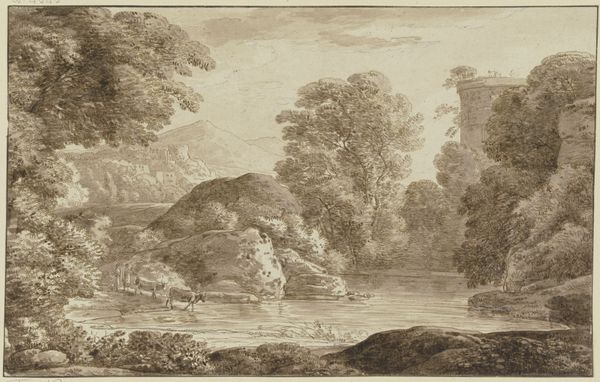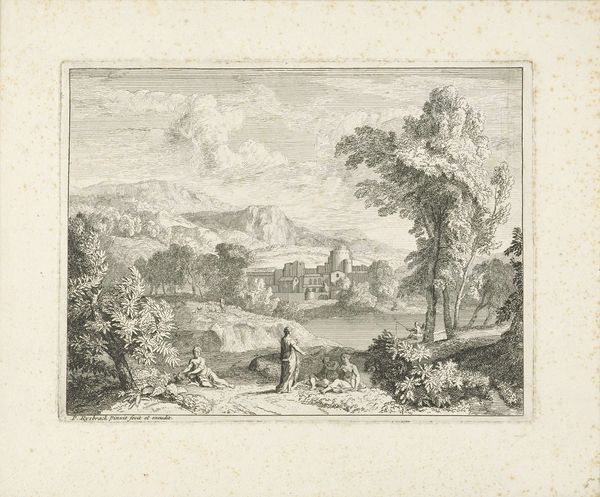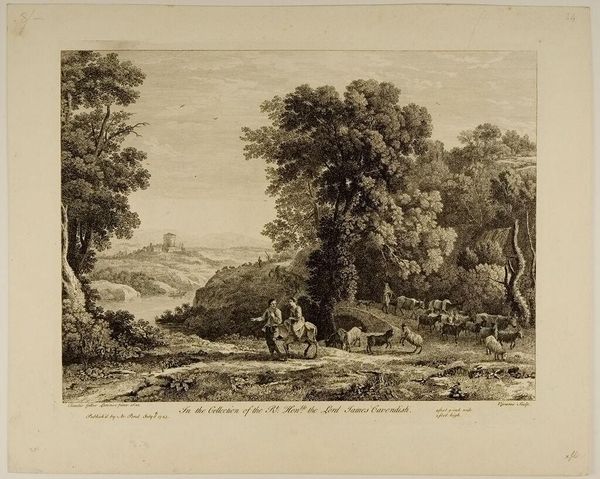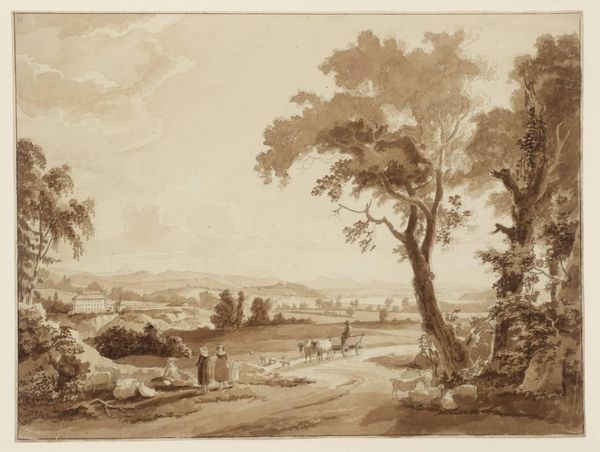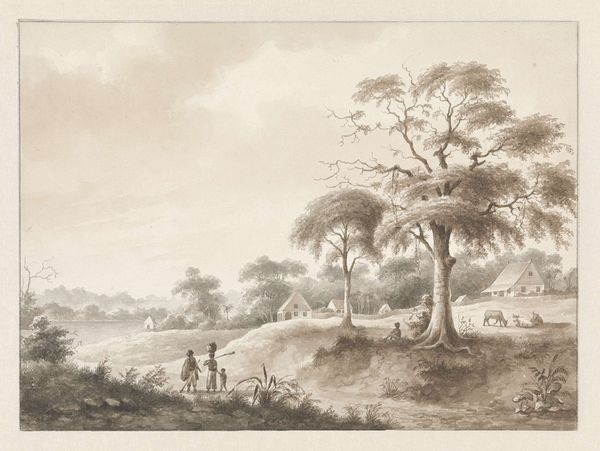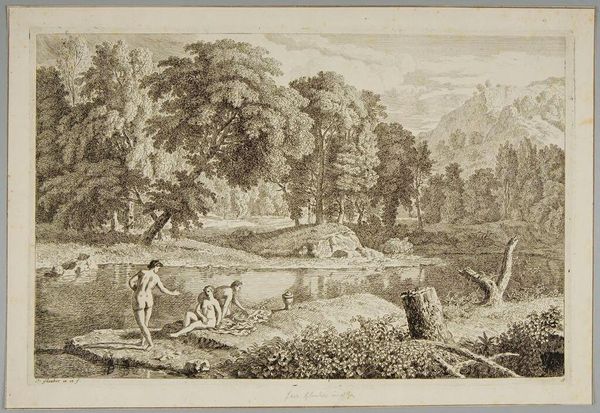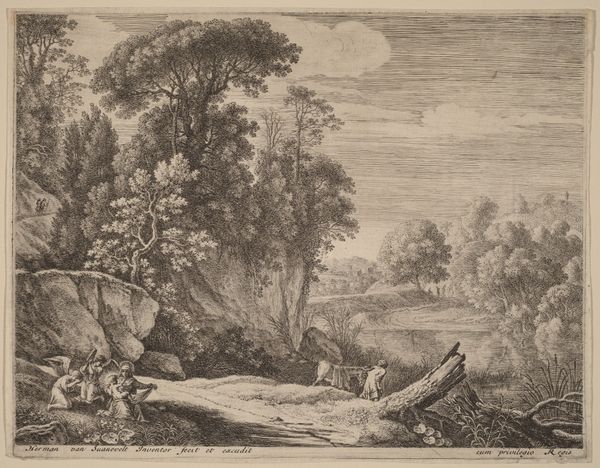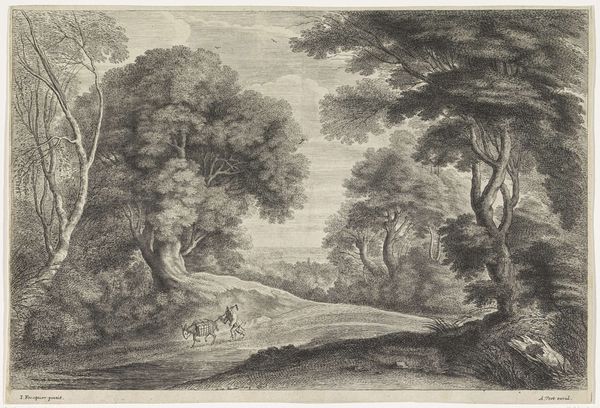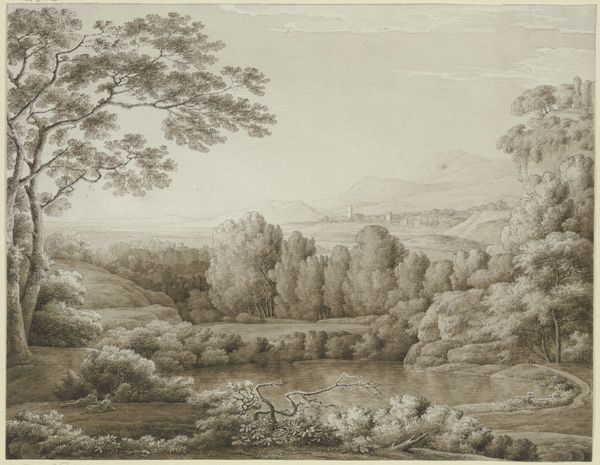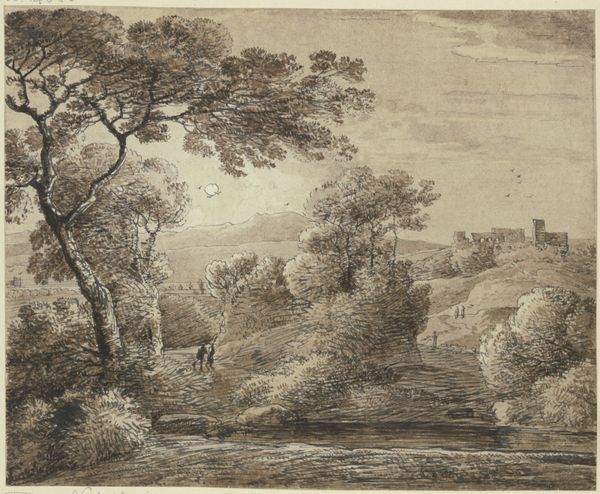
drawing, pencil, charcoal
#
drawing
#
pencil sketch
#
landscape
#
charcoal drawing
#
figuration
#
pencil drawing
#
romanticism
#
pencil
#
charcoal
#
history-painting
Copyright: Public domain
Curator: There's something incredibly delicate about this drawing. A serene yet melancholy quality hangs in the air. Editor: Indeed. What we have here is John Martin's "The Garden of Eden," a pencil and charcoal drawing from 1821. Martin was, of course, working within the Romantic tradition. He would later do full paintings depicting dramatic Biblical scenes, with strong use of chiaroscuro. Curator: It’s interesting to see how those interests already seem to be present in the stark tonal contrast of light and shadow across the landscape in this piece, particularly given that it’s a preliminary work, made on humble materials. He is not simply depicting an ideal landscape but engaging with the human cost implicit even in idyllic imagery of innocence. Editor: Note how he positions Adam and Eve centrally within this panoramic space, visually and narratively dwarfed. They occupy the middle ground between the foreground flora, rendered with tight graphic control, and an infinite horizon filled with hazily articulated plant forms. Their physical gestures have been encoded to show us their innocence in visual terms. Curator: Yes, their nudity obviously emphasizes vulnerability. However, one must think about how paper production was increasingly industrialized and accessible by this period, allowing the circulation of ideas that questioned established norms in art production. What had previously been sketched on a costly material, prepared painstakingly, now lent itself to studies from everyday people. Editor: I can agree there is much to say about the way material conditions influence the art object and it’s making. Nonetheless, the composition is critical: The overall impression, however somber in hue, is a kind of harmony, established from dark to light. One could even apply ideas taken from textural criticism and arrive at meaning through comparison with the literary treatment of the same scene. Curator: Perhaps so, but isn't it equally crucial to reflect on the very act of visualizing Eden, understanding that access to accessible artmaking tools would influence public understanding of that world. We should think of these images not simply as beautiful landscapes, but also products of human intervention, reflective of labor, technique, and the social context of the time. Editor: Well, I suppose there is enough richness in the work to satisfy diverse interpretations. Curator: Precisely. This humble drawing then becomes a potent reminder of how human hands shaped even the most idealized visions.
Comments
No comments
Be the first to comment and join the conversation on the ultimate creative platform.
